
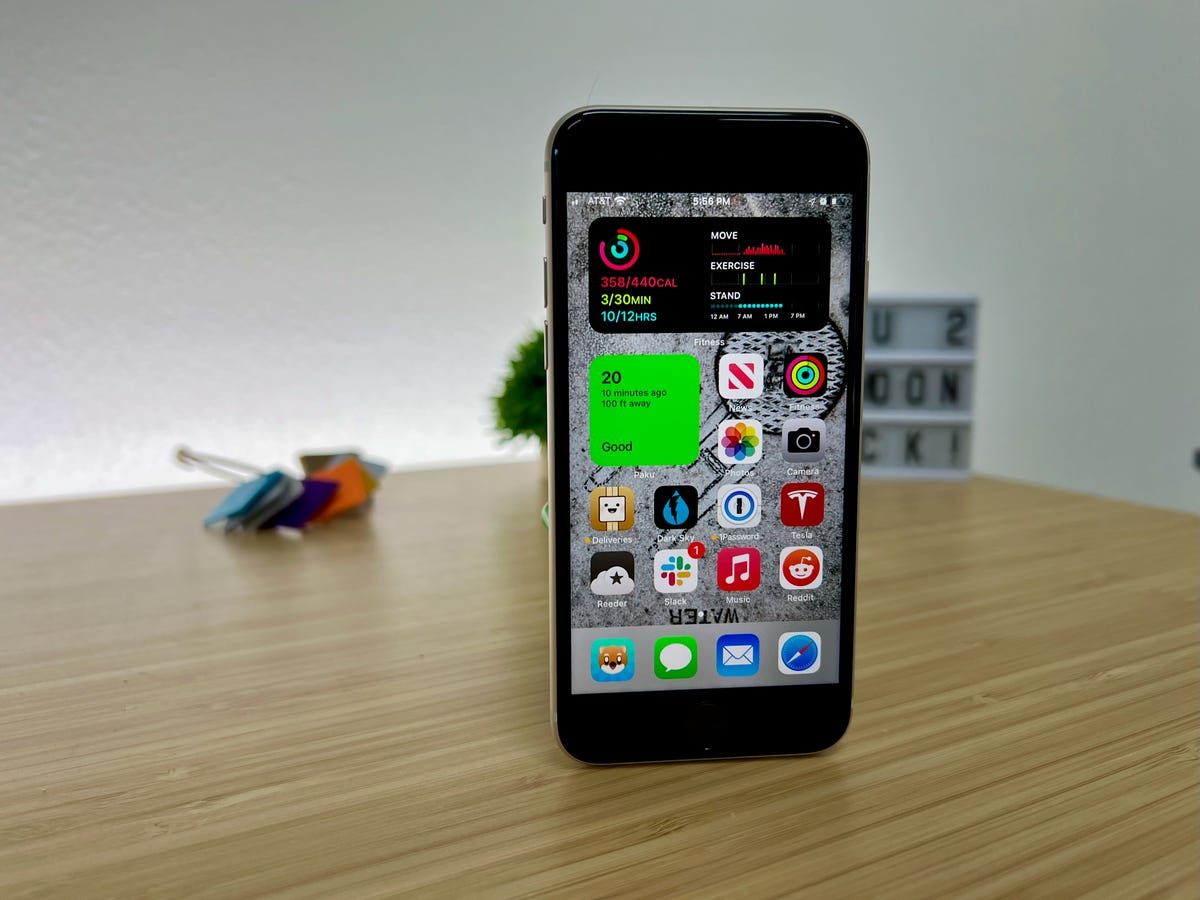
Jason Cipriani/ZDNet
I’m guilty of spending way too much time obsessing over the latest smartphone trends, looking for features that are going to shape and change the way many of us live in the near future.
The problem with this line of thinking is that there’s an entire segment of users left out. Users who don’t care about having the best technology, but simply want a phone that’s going to give them a way to communicate with jobs, loved ones and friends for the next few years, without costing a fortune.
Apple’s iPhone SE
comes in. Apple just announced the third-generation budget-friendly iPhone. The 2022 edition of the iPhone SE starts at $429 — a $30 price increase from the previous generation. Preorders are currently open, with shipments and retail availability starting on Friday, March 18.
I’ve spent the last five days using the iPhone SE as my main phone, and besides having to adjust going from an
iPhone 13 Pro Max
and its massive (by comparison) 6.7-inch display, I’ve enjoyed going back to a smaller, more manageable iPhone. If you want the tl;dr version that won’t spoil the review, then I’ll just say this: The iPhone SE is a treat to use.
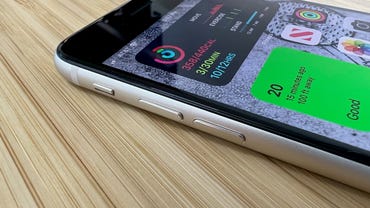
Like
- Timeless design
- Great camera
- Impressive performance
- Price
- 5G
Don’t Like
- Battery life could be an issue for some
If you want all of the nitty-gritty details, well, then, keep on reading.
Design
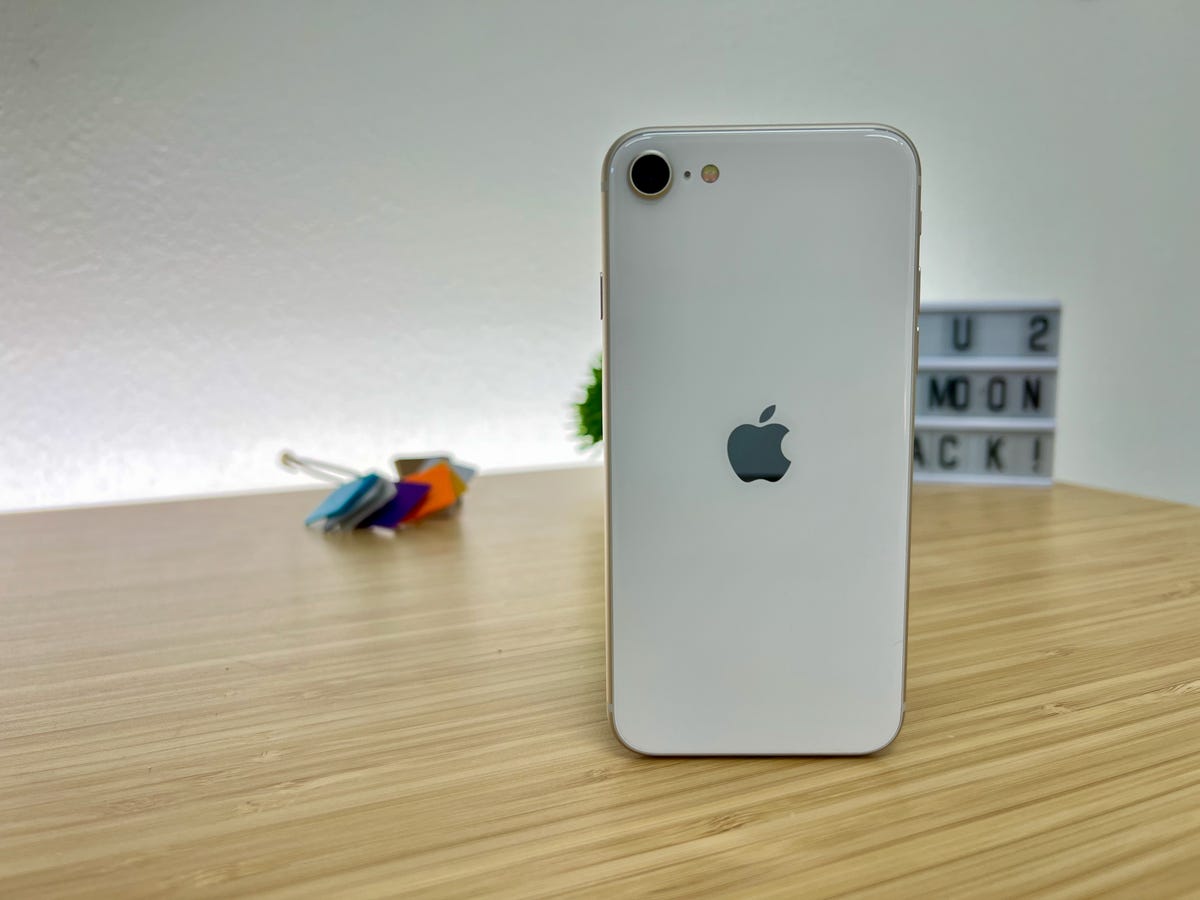
Jason Cipriani/ZDNet
There’s not a lot left to say about the design of the iPhone SE. It’s the same design as the 2020 iPhone SE, which uses the same design as the iPhone 8. As a refresher, that translates into an iPhone with a 4.7-inch Retina display with a resolution of 1334×750.
There are large bezels above and below the display, both of which serve as a reminder of how spoiled we’ve become by displays that span edge-to-edge in modern iPhone designs.
The “chin” below the display is Apple’s iconic home button with Touch ID that’s used to unlock the phone, approve Apple Pay purchases and sign into apps.
The “forehead” above the display is where the 7-megapixel FaceTime camera is housed, along with the earpiece. Surrounding the entire device are rounded edges, yet another contrast to the iPhone 13’s square-edge design.
On the right side of the iPhone SE is the side button that’s used to turn it on/off and wake or lock the phone. On the left edge is where the volume up and volume down buttons are located, along with the mute switch. On the bottom of the phone is a Lighting port for charging or syncing the phone.
On the rear of the iPhone SE is a single 12-megapixel wide camera and a flash. The back panel and the display of the phone use the same glass that’s used on the back of the iPhone 13 — which Apple claims is the toughest glass used on a smartphone. To be clear, it’s not the same Ceramic Shield glass that’s used on the iPhone 13’s screen.
The iPhone SE is available in three different colors. There’s Midnight (black), Starlight (white) and Product(RED). I’ve been using the Starlight version, and really like it.
One aspect of the iPhone SE I wish Apple would have changed is by adding MagSafe to the back of the phone. MagSafe has morphed into a feature that’s about more than a means to charge an iPhone. There are a large number of accessories that work with MagSafe like Apple’s own
MagSafe wallet
Moment’s MagSafe phone mounts for photography
or the countless cases that exist now for the iPhone 12 and iPhone 13.
Performance
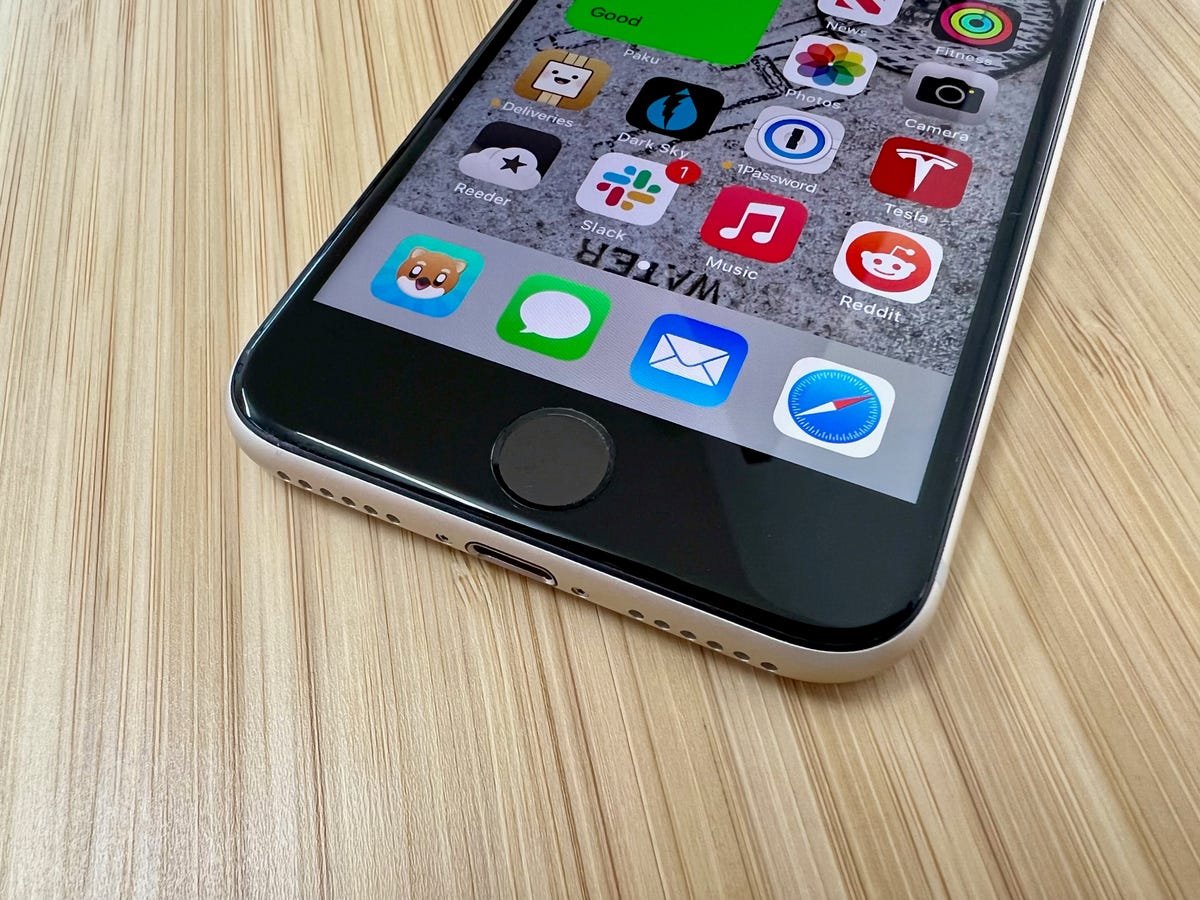
Jason Cipriani/ZDNet
While the design of the iPhone SE is something we’ve all seen before, what’s inside the latest iPhone SE is a big change. With the iPhone SE, Apple used the same processor — the A15 Bionic — that’s inside the iPhone 13 lineup. The A15 Bionic is a 6-core CPU, with 2 performance cores and 4 efficiency cores. It also has a 4-core GPU and a 16-core Neural Engine. Apple doesn’t publish or talk about the amount of memory in its mobile devices, but I can confirm the iPhone SE has 4GB of memory.
I’m not a huge fan of using benchmarks to determine a device’s overall performance, be it a computer, tablet or smartphone. However, I was curious how the iPhone SE’s performance compared to the iPhone 13 Pro Max — considering they have the same processor — as well as the
Pixel 6 Pro
with the first-generation Google Tensor processor.
I ran the CPU test in Geekbench 5 on all three devices. The Pixel 6 Pro scored a 932 for the single-core test, and 2,139 for the multi-core test. The iPhone 13 Pro Max scored 1,741 and 4,316, respectively. The iPhone SE had a score of 1,731 and 4,466 for the same single and multi-core tests. Put that another way — the iPhone SE is almost twice as fast as the $899 Pixel 6 Pro, Google’s flagship phone. If that’s not enough to impress you, then let me put it yet another way. The $429 iPhone SE is just as fast as Apple’s most expensive phone, the $1,099 iPhone 13 Pro Max.
My personal experience confirms that the iPhone SE is just as fast as the iPhone 13 Pro Max (which is my main phone). It’s not only noticeable in how fast apps open or when multitasking, but also while changing between camera modes, for example.
Another benefit of using the A15 Bionic in the iPhone SE is the addition of 5G connectivity. More specifically, you’ll get Sub-6 5G, and not mmWave. I don’t know what kind of impact 5G has on battery life for the iPhone SE because AT&T still hasn’t launched 5G where I live. While the lack of mmWave may be a disappointment to some, I agree with ZDNet Staff Editor June Wan who wrote about the lack of mmWave on the iPhone SE not being a big deal. If the iPhone SE was double the cost, sure. But at $429, the lack of mmWave is a non-issue. For those who are unfamiliar, mmWave is the fastest flavor of 5G currently available, but the rollout has been slow and sporadic and requires you to be very close to a tower, and is often hampered by windows or even trees.
The lone 12-megapixel camera is no slouch. While Apple didn’t upgrade the hardware itself, the camera benefits from the A15 Bionic processor and its image signal processor. The end result is a camera that takes clear and crisp photos without any tinkering with settings. Open the camera, take the picture and share.
I took a lot of pictures over the last few days and I can honestly say that I didn’t take any where I felt like the camera experience wasn’t on par with the iPhone 13 Pro Max, with the caveat that the Pro Max has three cameras to the iPhone SE’s single lens. Instead of showing you pictures of random everyday objects or boring food photos, I’ll share this one of my dogs.

Jason Cipriani/ZDNet
The 7-megapixel FaceTime camera is also clear and sharp. I was impressed with how clear of a picture came across in FaceTime tests with my wife.
As far as battery life goes, Apple states that it added about two hours of use to the iPhone SE’s battery when compared to the second-generation iPhone SE. That equates to 15 hours of video playback, compared to 13 hours of the previous model.
In my use, battery life hasn’t been anywhere close to what the iPhone 13 Pro Max offers, but that’s to be expected. We’ll have to wait until iFixit tears down the iPhone SE to see what size the battery is, but I’d imagine it’s much smaller than the iPhone 13 Pro Max’s 4,352 mAh battery. For reference, the 2020 iPhone SE’s battery is 1,821 mAh.
That said, I’ve been able to get over 3 hours of screen-on time during testing throughout a typical day before I had to reach for my charger. It’s good enough for someone who doesn’t live on their phone, constantly checking social media, messages or email. If you consider yourself a power user, you’ll likely find the iPhone SE’s battery life lacking.
I do wish Apple would have bumped up the base storage from 64GB to 128GB, especially with the price increase. Instead, you can get the 64GB for $429, 128GB for $479 and 256GB for $579.
Bottom line
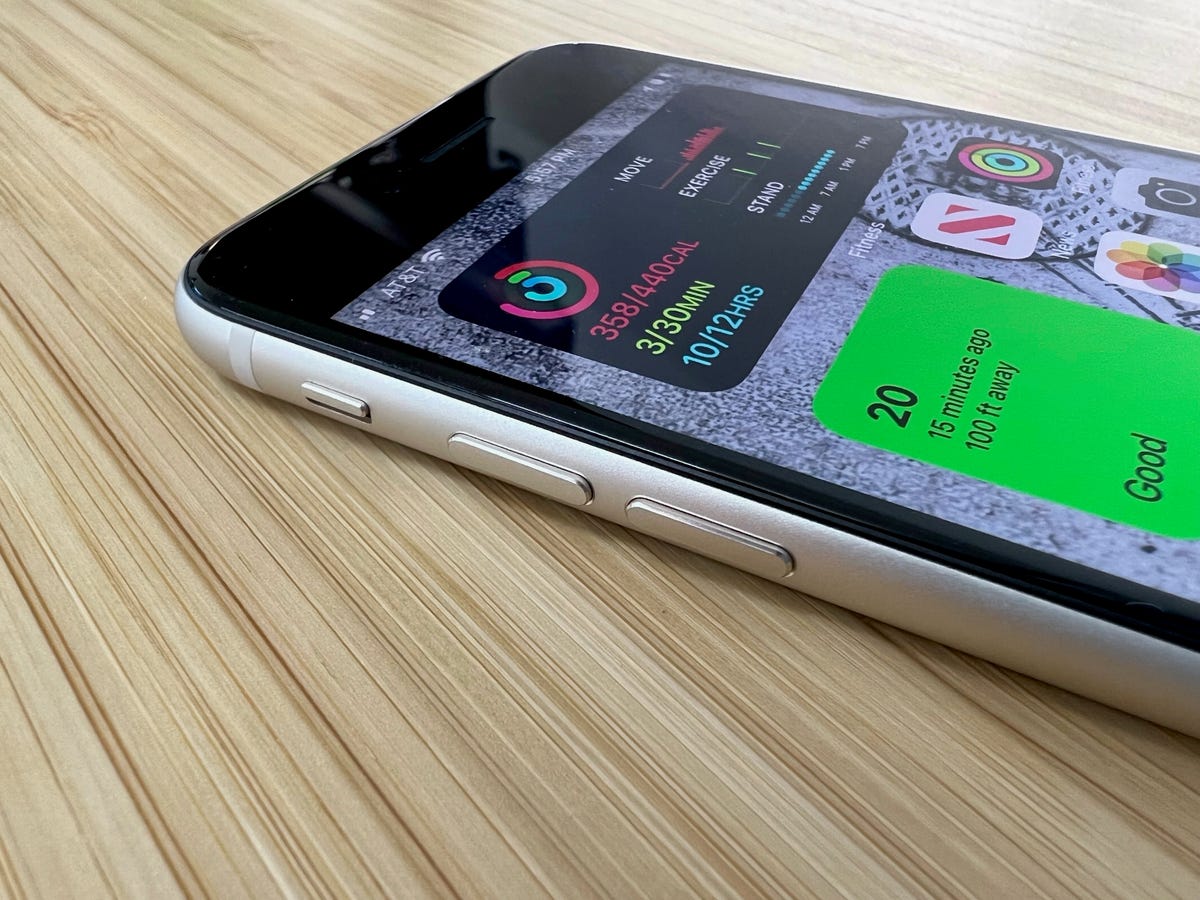
Jason Cipriani/ZDNet
The iPhone SE is, arguably, just as important as the iPhone 13 to Apple’s smartphone portfolio. And the updates Apple made to the iPhone SE bring it current with modern tech in terms of performance and 5G connectivity thanks, in part, to the A15 Bionic. It’s a phone that runs iOS 15 right now and will continue to receive iOS updates for the next several years.
Apple has fine-tuned the recipe that is the iPhone SE, improving upon a phone that was already a steal. Whether you’re managing a fleet of workers who you need to equip with an iPhone, or you’re simply someone who likes smaller iPhones, the iPhone SE is an easy choice. You simply can’t find a better phone at this price.

